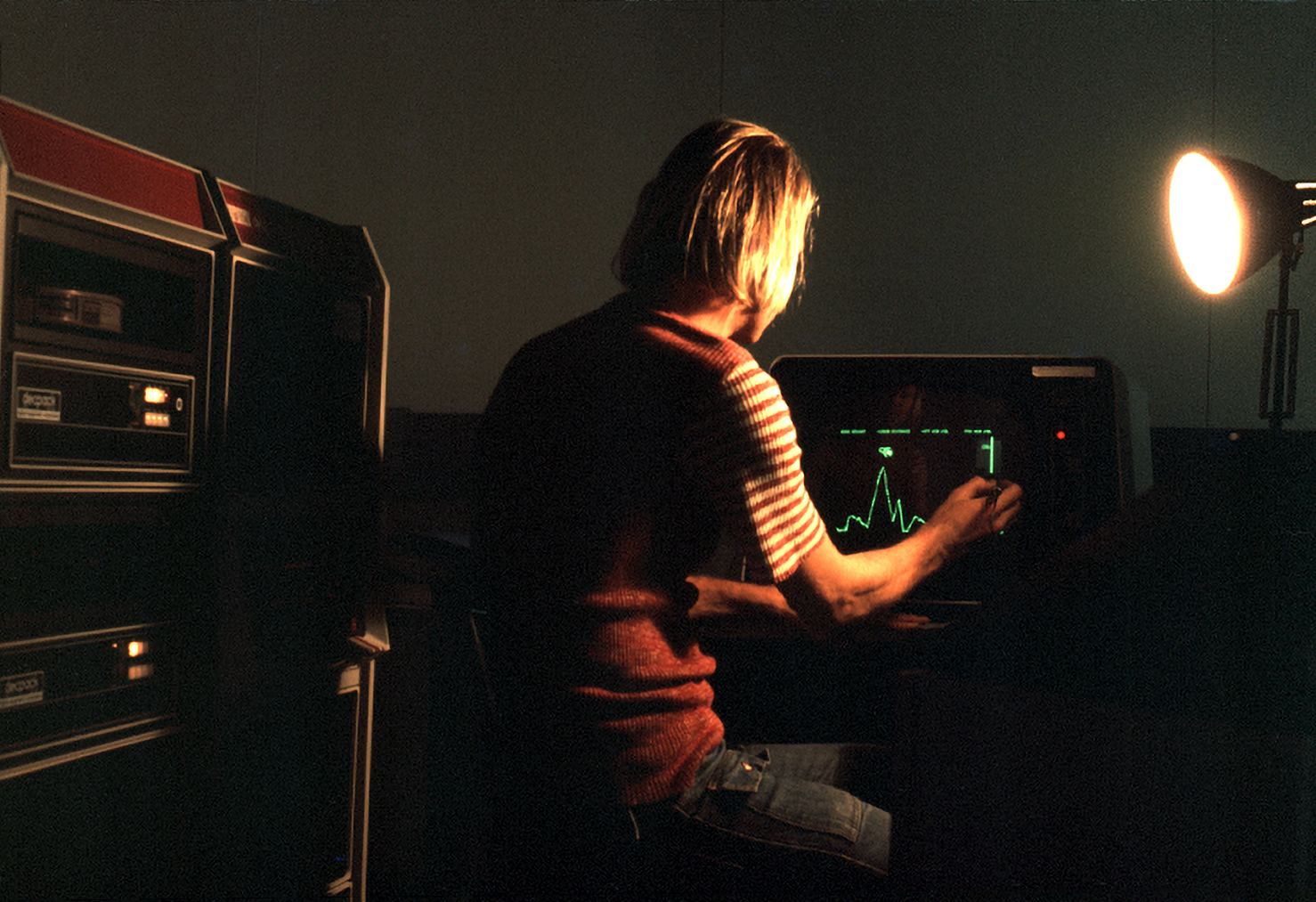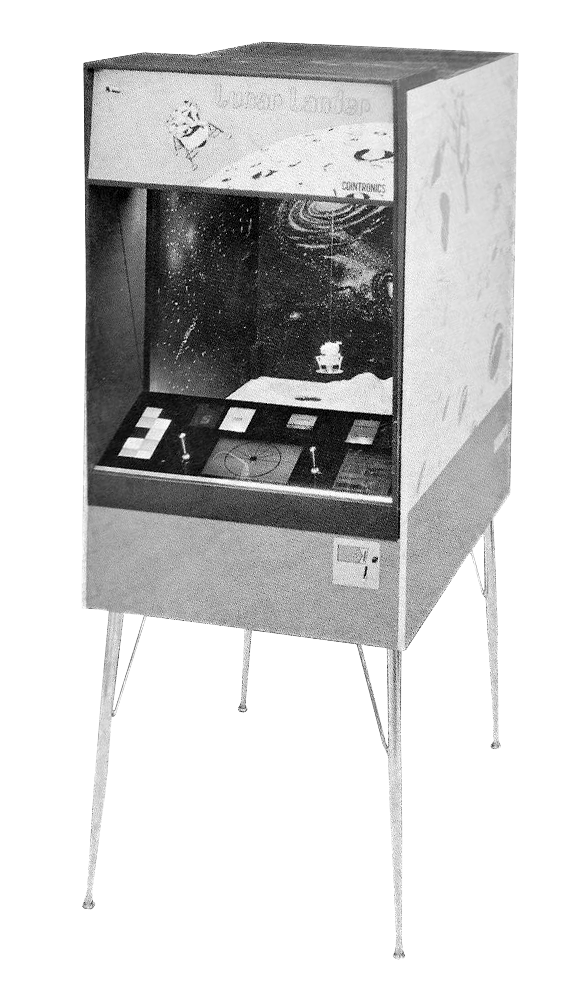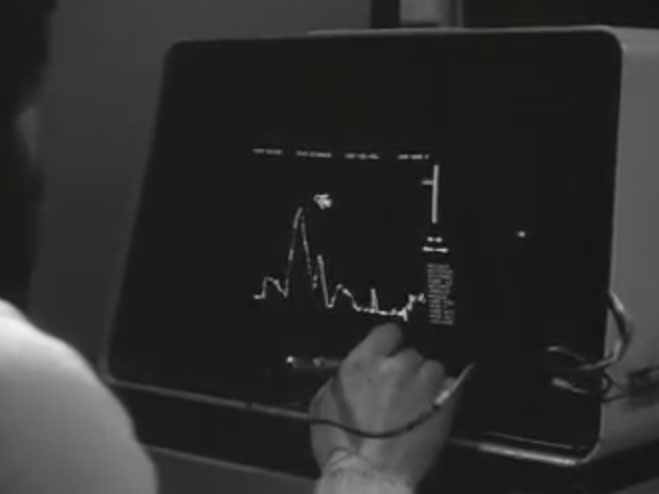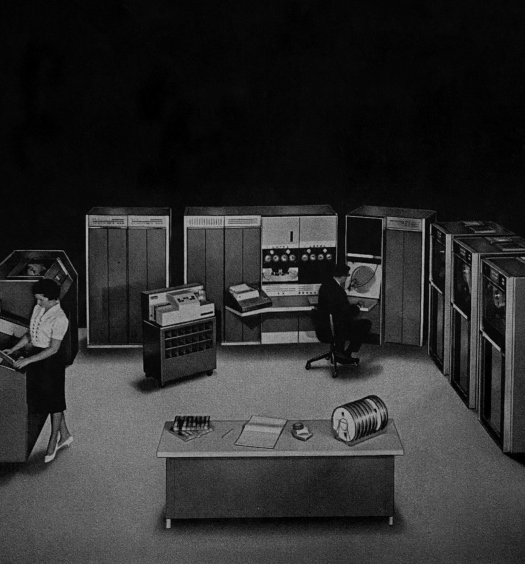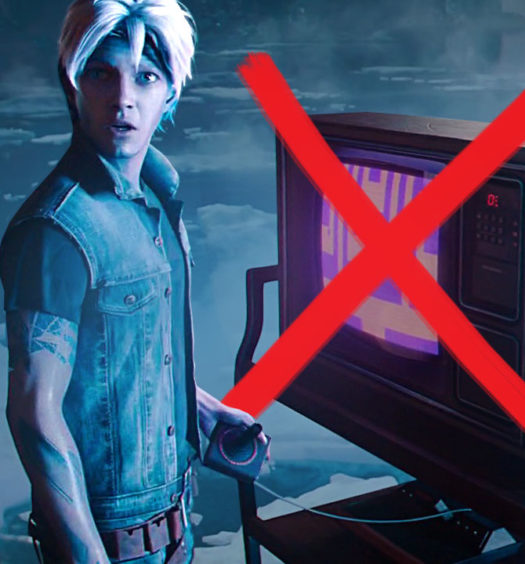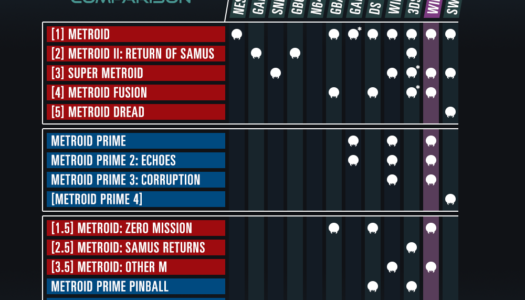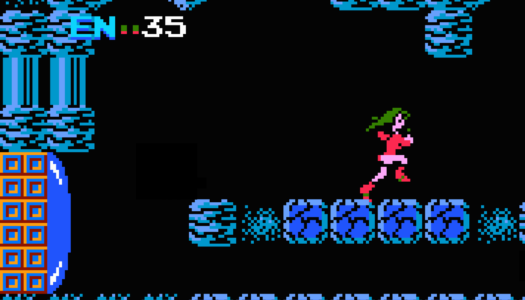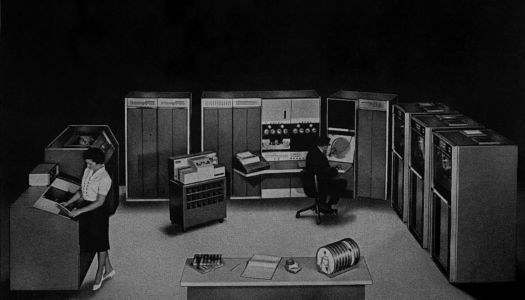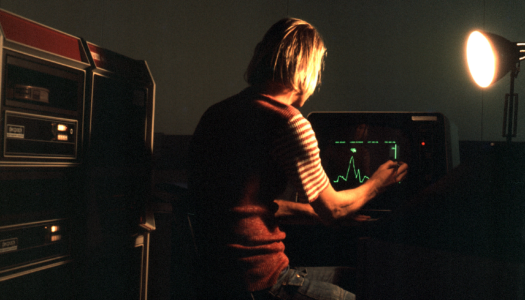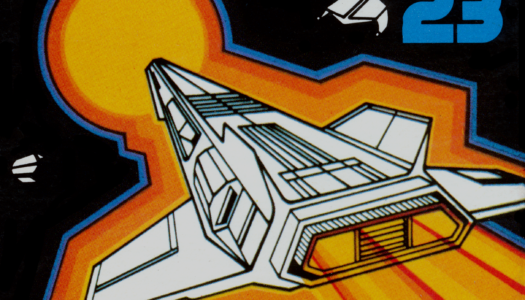Everyone knows Neil Armstrong was the first man on the Moon, but who was the first man in a video game?
Early video game history is littered with “firsts” — the footprints of trailblazers and innovators who established the conventions of this new medium, paving the way for the games that followed.
But like footprints, these minor developments are easy to miss if you’re not looking out for them. They’re the things we take for granted, like the first on-screen depiction of a human, or the first game to take place across multiple screens. The first overworld map. The hidden “Easter Egg.” Or how about the first cutscene — those cinematic sequences that temporarily remove control from the player?
We consider a game important based on the range of its influence or concepts it innovated. Incidentally, all the “firsts” innovated above debuted in a single game: 1973’s Moonlander by Jack Burness.
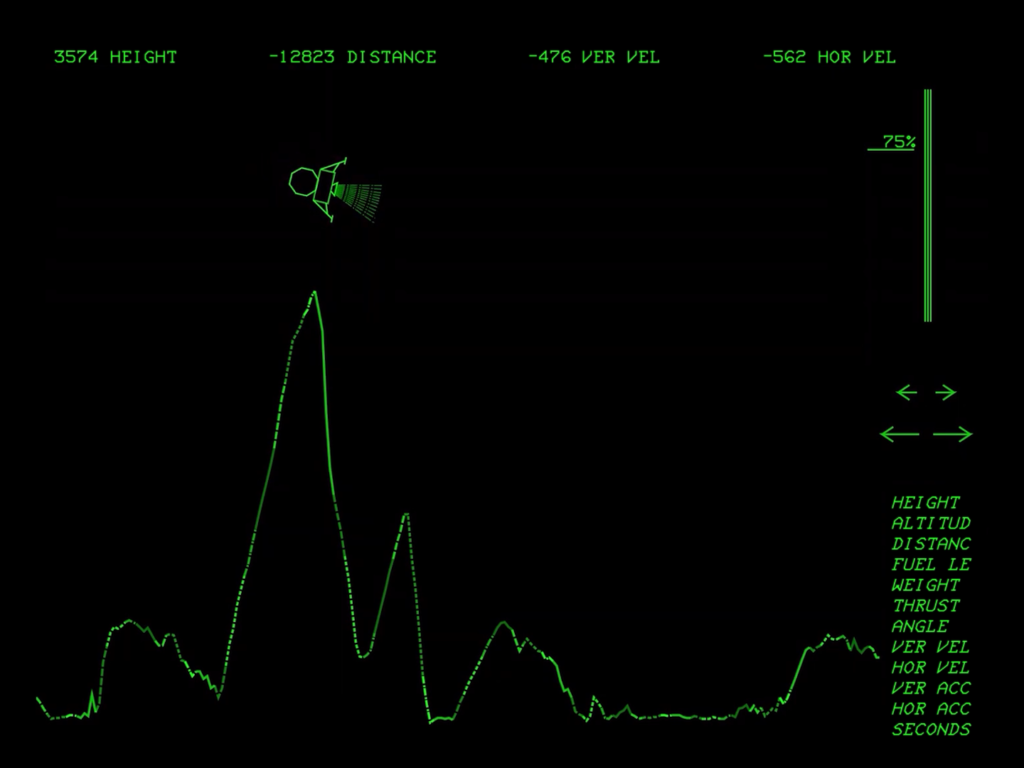
In my recent video essay The First True Easter Egg: Ready Player One Was Wrong, I demonstrate these many firsts in captured gameplay footage. But now I’d like to delve deeper into how this game came to exist, and what we can do to ensure it continues to exist.
This is the story of Moonlander.
Woodstock For Space Geeks
In 1962, President John F. Kennedy spoke the bold words: “we choose to go to the Moon!” And although he didn’t live to see it, the world finally watched a man walk on the moon in 1969.
In the years between those two events, space-themed fiction slowly gained mainstream appeal. Previously viewed as a niche for geeks, audiences of the late ‘60s were tuning in for Star Trek and Lost In Space, and were captivated and/or confounded by Stanley Kubrick’s 2001: A Space Odyssey.
Space was even invading rock music. In 1962, The Tornados were the first British group with a #1 U.S. hit with “Telstar,” named after a recently launched communications satellite. By the late ‘60s, space was a common theme of British acts like Jimi Hendrix, Pink Floyd, and David Bowie.
But one group of MIT grads were ahead of the curve. At the beginning of 1962, before JFK’s announcement or the launch of the Telstar, they were already working on the first space-themed computer game.
Before “Silicon Valley” became the tech capital of the world, tech was scattered across several slightly smaller capitals. One such area was eastern Massachusetts, the home of MIT (Massachusetts Institute of Technology) in the city of Cambridge, and DEC (Digital Equipment Corporation) in the town of Maynard. When DEC donated one of their new PDP-1 “minicomputers” to MIT in 1961, three science fiction fans were inspired to create a competitive two-player game called Spacewar!
Although Spacewar! wasn’t the first real-time graphical computer game, it was basically the only one anyone could play for the better part of a decade. Earlier experiments were typically disassembled or put away after a short time, and new graphical games were a rarity because most computers didn’t use monitors!
Instead, computers relied on printers for output. As a result, when people did create games, they were typically text-based and of the prompt-and-response variety. This made Spacewar! extra unique, and it remained a popular demonstration tool well into the ‘70s.
Maybe that’s where DEC got the idea to commission a new game when they needed to demonstrate a new variety of hardware.
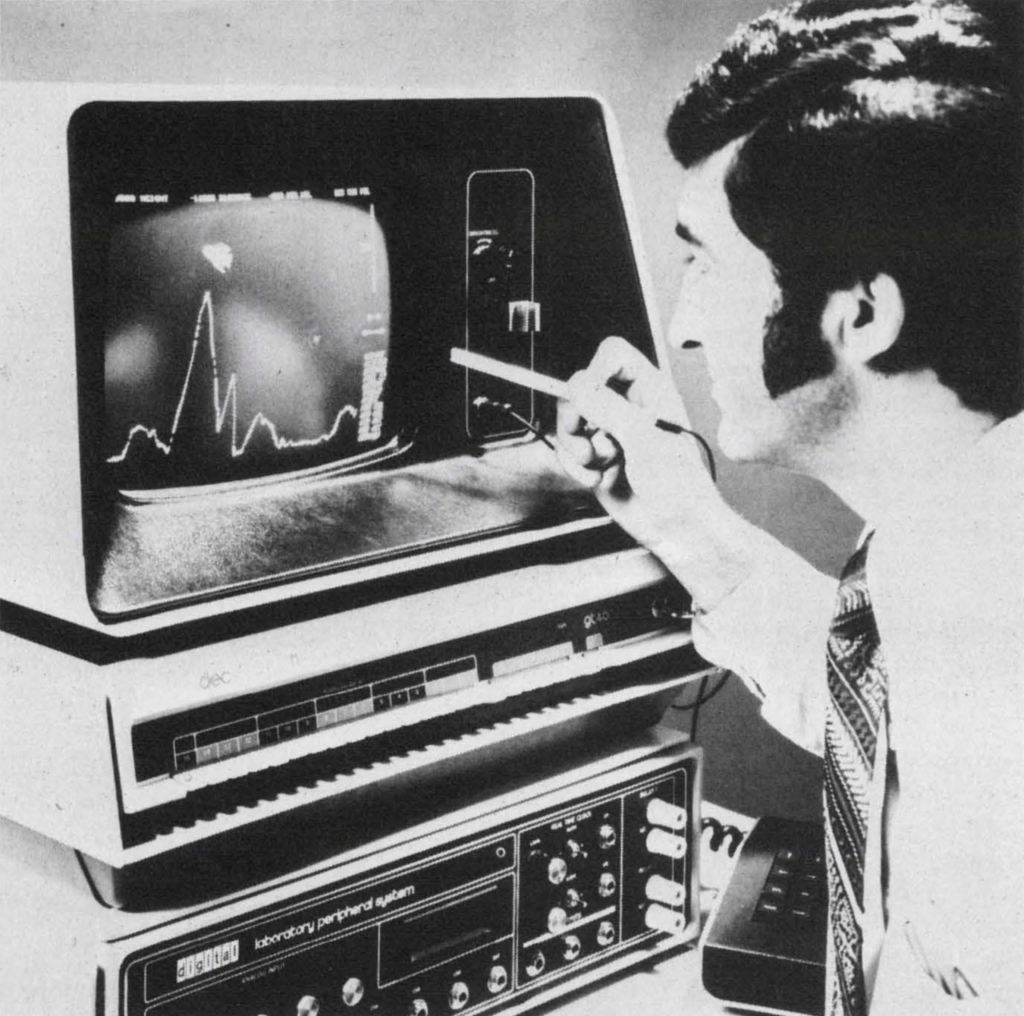
Released at the end of 1972, the GT40 was a vector monitor with a light pen, which allowed users to interact directly with the screen. So unusual was the concept of hooking a keyboard up to a screen that Boston Globe reporter Eric Sauter described it as “a cross between a reluctant typewriter and an overeager television set.”
DEC contracted the game out to Jack Burness, a former employee who was now an independent consultant. But where Spacewar! was inspired by science fiction, Burness’s game would be to be inspired by science fact. He was going to simulate a lunar landing.
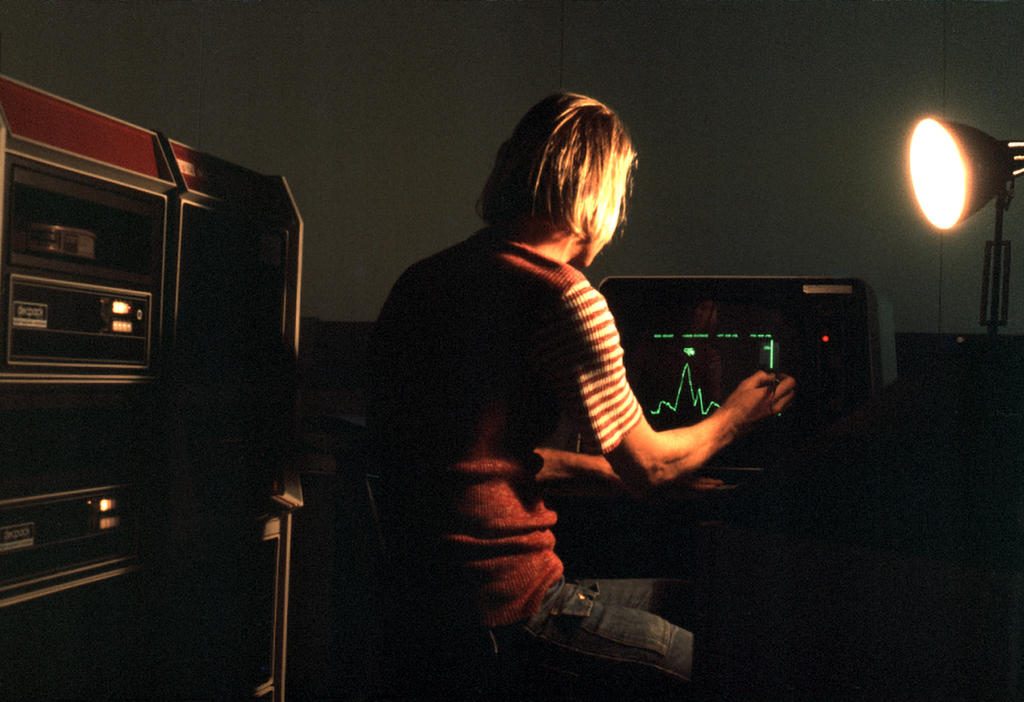
A few months earlier, Burness attended the launch of Apollo 17, the last time NASA would send an astronaut to the Moon. He’d “badgered” his state senator, Edward Brooke, in hopes he’d in turn badger Nixon into getting him a VIP invite.
The launch took place after midnight on the evening of December 6, 1972. But he and his friends weren’t satisfied hanging out in the VIP area. They wanted a closer look.
“[We] slipped out and went up front to the closest spot spectators were permitted. Maybe three miles away. We brought blankets, some tunes, some wine and some dope. It was the Woodstock for Space Geeks.”
So it was only natural that Burness would make his game space-themed. He says it took only ten days to program, “plus a day at MIT getting the real numbers and figuring it all out.” It was completed on February 25, 1973, coincidentally just four days before the release of Pink Floyd’s Dark Side Of The Moon.
In the source code he named it Moonlander, yet most people remember it as Lunar Lander. The reasons why are unclear, maybe we can find some answers by looking at the other lunar landing games created just before Moonlander.
What’s In A Name?
The earliest lunar landing game was written by Jim Storer, a student at Lexington High School, located almost exactly halfway between Cambridge (MIT) and Maynard (DEC).
Like most games at the time, the game was text-based and played on a teletype printer. The computer asked you how much fuel you want to burn in the next 10 seconds, then told you your current height and velocity. The goal was to figure out how much your ship should thrust at each point along the journey in order to achieve a successful landing.
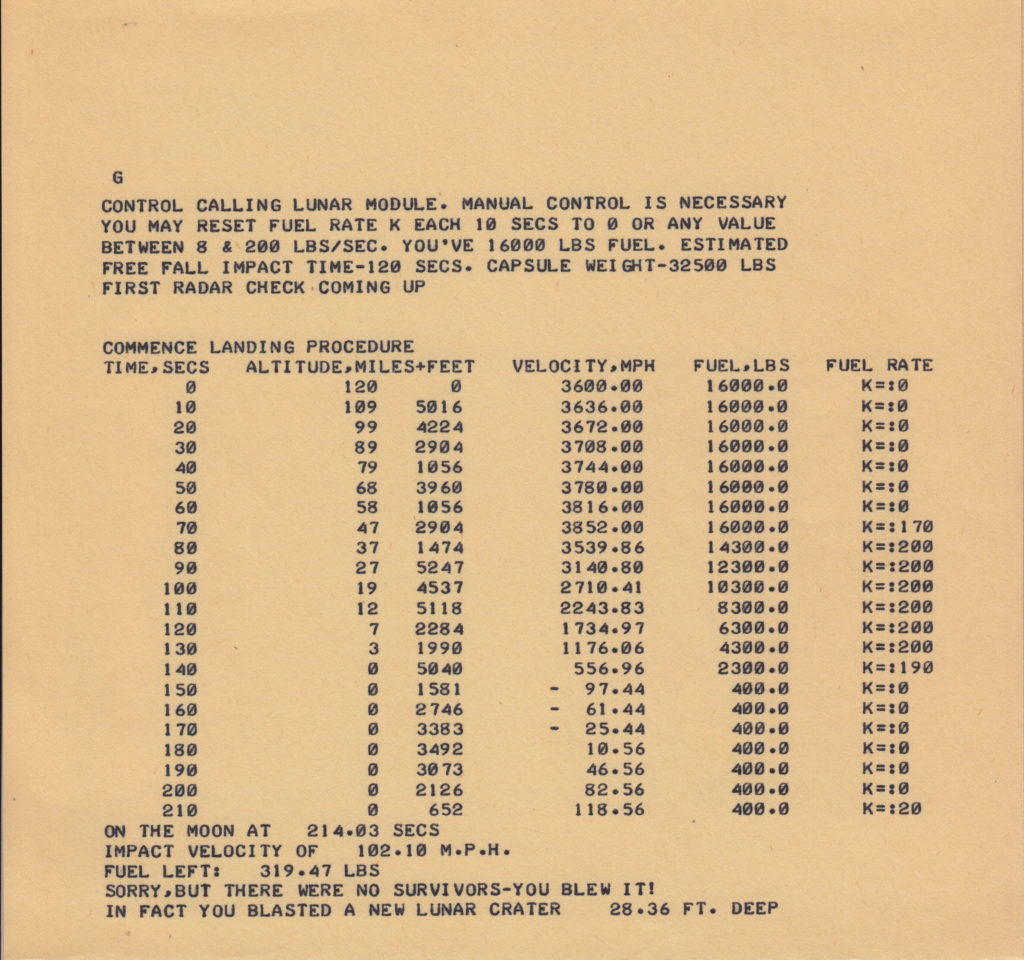
The game was completed at the end of the fall semester and uploaded to Lexington’s system library after Christmas break, where it could be accessed by typing “R ROCKET.” Computer Room teacher Walter Koetke also submitted it on Storer’s behalf to DEC, under the title “FOCAL Lunar Landing Simulation (APOLLO).”
When DEC published its first book of FOCAL-8 Demonstration Programs in 1970, Storer’s game was included as Lunar Module. Meanwhile, the DECUS archive listed it as APOLLO, where it led to “sequels” with names like APOLLO II (note the Roman numerals) and APOLLO 12.
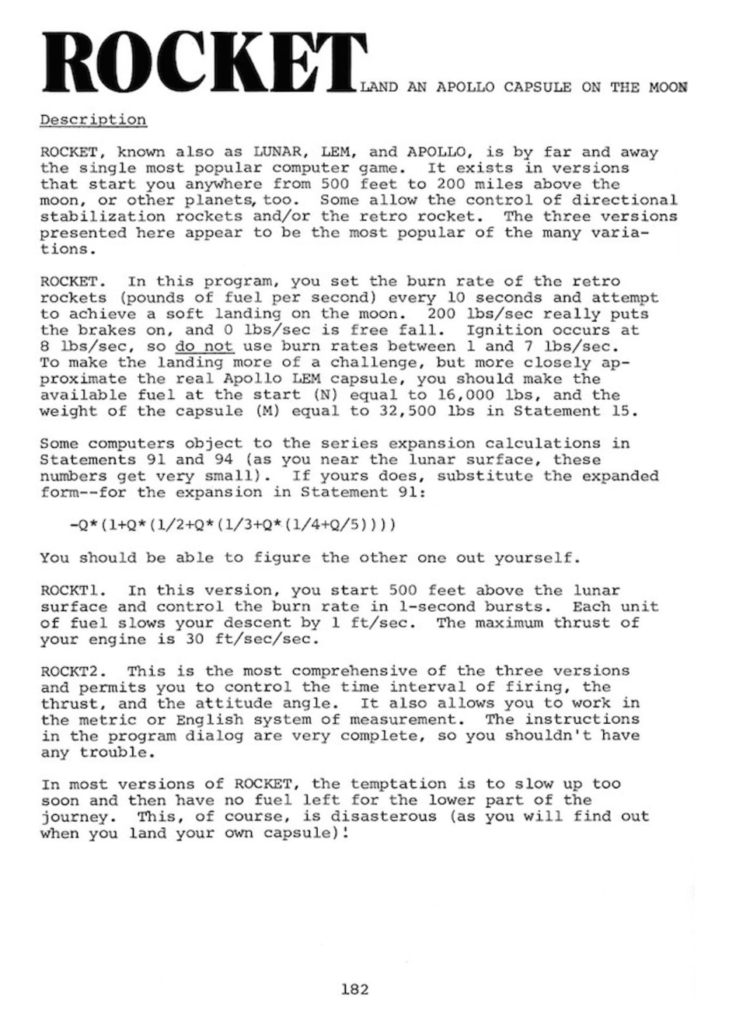
After being converted from FOCAL to BASIC, it was included in 101 BASIC Computer Games, a DEC collection edited by David H. Ahl. But now it had its Lexington system library name of ROCKET, and was published alongside two “sequels” (unrelated to those previously mentioned) called ROCKT1 and ROCKT2.
Editor Ahl noted that ROCKET, which he called “far and away the single most popular computer game,” was known by many alternate names, including APOLLO, LEM, and LUNAR. Later, a 1978 reprint of the collection renamed ROCKET to LUNAR, while confusingly renaming ROCKT1 to ROCKET.
Yet despite all this name confusion, today ROCKET/APOLLO is commonly known as: Lunar Lander. But why? Let’s try a different approach. What was the first game to be named Lunar Lander by its own creators?
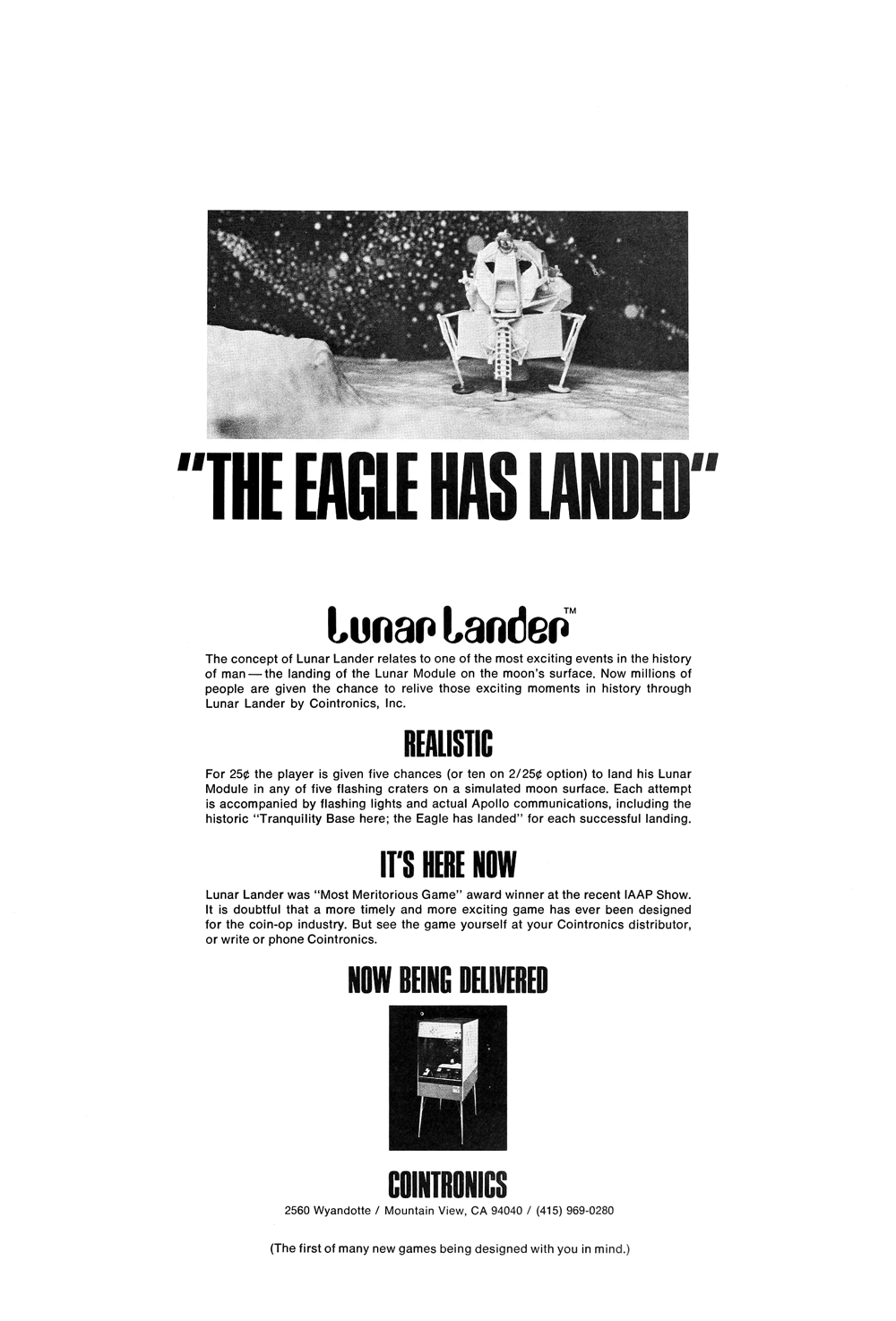
Cointronics released an electro-mechanical arcade game called Lunar Lander in January 1970 — coincidentally, the same month ROCKET/APOLLO was submitted to DEC. But where ROCKET/APOLLO ignored movement control in favor of fuel control, Cointronic’s game was all about movement.
You used two joysticks to control the X- and Z-axis of a toy-sized lunar module, navigating it to one of several lit-up landing spots while the module automatically lowered. The more spots you landed on within a limited number of tries, the better the grade you were given at the end.
Cointronics was founded by several ex-Nutting Associates employees, their exodus leaving a void that would briefly be filled by Nolan Bushnell, only for him to leave and co-found Atari. But Cointronics weren’t as lucky as Atari. Founded at the end of 1968, they were already out of business by the end of 1970, despite the popularity of Lunar Lander.
When the cabinet debuted at the IAAP expo in December 1969, it was awarded “Most Meritorious Exhibit.” Disneyland immediately bought several for the park. Location owners observed it was being played even by people who don’t normally play coin-op games.
By March, one distributor was calling it “the first successful attempt of a coin-operated amusement machine factory to exploit a news event of monumental importance to the world. The game will be around for many, many years to come.”
Of course, the true sign of a hit is being imitated by the big boys. In April, Bally began shipping a copycat machine called Space Flight. They reported it being one of their biggest sellers throughout the year, and at times even had trouble filling the orders fast enough.
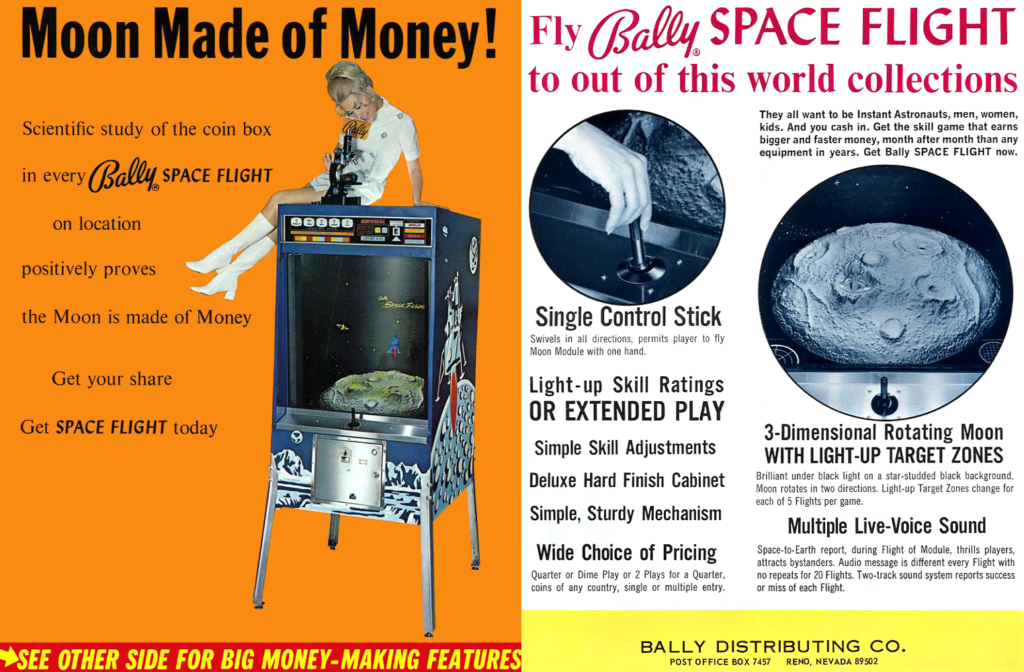
But the popularity of these machines wasn’t enough to keep Cointronics solvent. So the question remains: was Lunar Lander popular enough that it single-handed led to every lunar module game being called Lunar Lander? Did Cointronics name an entire genre, or was it merely coincidence?
The earliest example in print of a ROCKET/APOLLO variant being called Lunar Lander was in 1975’s What To Do After You Hit Return, a game collection similar to 101 BASIC. But had they played the Cointronics game?
Atari’s 1979 arcade game Lunar Lander is mostly inspired by Moonlander, but it also had rotating landing pads similar to the Cointronics game. Again I wonder: coincidence?
All I can tell you is that this two-word phrase was so pervasive that eventually someone added it to the opening screen of Moonlander.
The Mystery Of Mare Assabet
When the crew of Apollo 11 went to the Moon, they landed on an area named Mare Tranquillitatis, Latin for “Sea of Tranquility.” Various lunar plains have Latin names like this.
On Usenet, several people remembered Moonlander having an opening screen with a similar name. What was it? Mare…Assibet? Assabet?
But currently the most commonly available version of the game opens like this:
The source code for this version of Moonlander has been hosted on Brouhaha since the ‘90s, for which I’m eternally grateful. But there are details in the code that confuse people.
For example, the header claims it’s the “First Version,” but I can confirm that it isn’t. The same website quotes Burness about a bug that was in early versions, but not in this version:
“On early (and mid) versions of the program, after planting the flag (or getting the cheeseburgers) and the LEM is ready to take off, if you hold the fuel at 0, the lander will “reland” itself. By doing this you would get more fuel.
“The reason is that to ensure takeoff, the program automatically gives you enough fuel to get off. It does this by simply adding it on to what you have. If you repeatedly ‘reland’ the craft, eventually you can get enough fuel to take off and explore for some time.
“Later versions had the take-off mechanism force the values, but these could still be overridden by diligently applying the lightpen. This ‘relanding’ was a bug found by Herb Jacobs.”
Brouhaha also hosts “Binaries supplied by John Holden” which can’t be opened and read like source code, but can be loaded into an emulator if you’re savvy.
These binaries display a different opening screen:
You can’t tell from this still image, but the name “Mare Assabet” blinks, on top of being both italic and lower-case, features that weren’t very common at the time. But what is Mare Assabet? It’s not any known area of the Moon.
So I asked Jack Burness, who excitedly informed me I was the first person to ever ask him this. It turns it was a very specific in-joke.
“I came from NYC and moved to Maynard, Massachusetts. It was quite a significant change. The Assabet River flowed through Maynard . . . I think I said it was a bleak and lifeless place.”
He also confirmed that the “Mare Assabet” line was in all versions he personally modified, which means the “RT-11 Lunar Lander” opening must’ve been written by some unknown person on some unknown date.
But that’s not all. He also didn’t remember the joke about “an inferior brand of minicomputer” — clearly intended to refer to DEC’s rivals — which means even this screen might not be the original!
I’m pretty sure the source of the joke is 101 BASIC Computer Games. Depending on which edition you have, the intro to ROCKET/LUNAR says either:
THE ON-BOARD COMPUTER HAS FAILED (IT WASN’T MADE BY DIGITAL) SO YOU HAVE TO LAND THE CAPSULE MANUALLY.
or
THE ON-BOARD COMPUTER HAS FAILED (IT WAS MADE BY XEROX) SO YOU HAVE TO LAND THE CAPSULE MANUALLY.
This line wasn’t in ROCKET/APOLLO when it was sent to DEC. And for all I know, it probably offends any knowledgeable space geek who knows that the lunar module was always piloted manually, on every Apollo mission.
But it seems like most people who played both the text-only and GT40 versions connected the two in their minds, and wanted to bring these Lunar Landers closer together. Admittedly, there were already a few similarities. For example, both games grade you on whether you achieved a “Perfect Landing” or merely a “Good Landing.” Both mention whether your craft took damage, or if you “blew” it and “there were no survivors.”
While Burness did see ROCKET/APOLLO or one of its “sequels,” he wasn’t terribly impressed. Which is understandable; it’s hard to be impressed by text games after you’ve seen Spacewar!
And besides, none of those games had a McDonald’s.
Two Cheeseburgers And A Big Mac To Go
In a 1974 profile on computer and video games, Boston Globe reporter Eric Sauter noted the “strange” sense of humor of Jack Burness, such as in an anecdote Burness related:
“One of the things I did years ago, I actually auditioned for The Dick Cavett Show with a computer that sang ‘California Dreamin’, and” he said, his voice rising, “the producer was not impressed.
“He expected computers to talk.”
Moonlander contains plenty of this “strange” sense of humor, but the most obvious example is the MacDonald’s on the Moon.
Yes, I just spelled “McDonald’s” wrong, but I’m merely being faithful to how it was spelled in the game. When asked about this, Burness jokingly chalked it up to “illiteracy,” and then added, “It was early 1972, and McDonald’s weren’t too common. Especially in Maynard.”
But what possessed him to put a MacDonald’s on the Moon at all? He simply felt the game needed that little something extra. “It [was] programmed as I went. I got to the moon and knew I had to do more.”
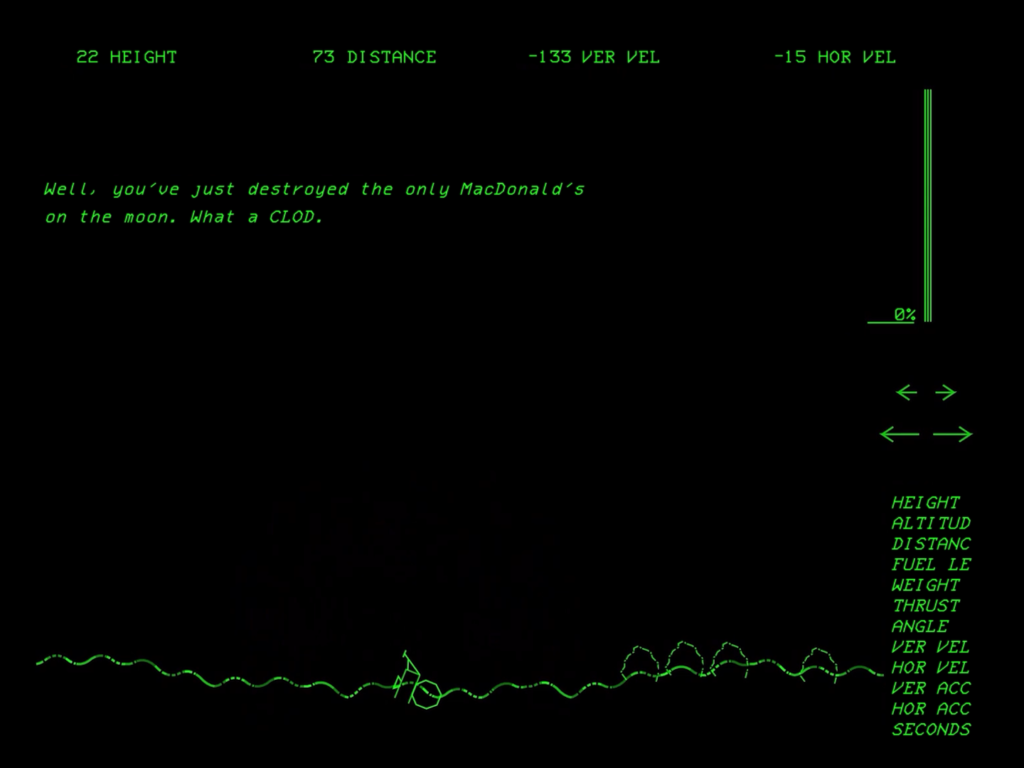
The funniest moment in the game is when the computer insults you if you crash into the MacDonald’s. (It’s even funnier today if you’re fan of Steven Universe.) But it’s no joke when the game tells you you’ve “just destroyed the only MacDonald’s on the Moon.” The MacDonald’s remains destroyed until the game is reset, ruining the fun for anyone you were taking turns with.
However, not all of the humor has aged so well since the ‘70s. Buried in the source code, you can find the spaceman’s name. Burness thought his movements were too jerky on the original hardware, so he was given the name “Palsy” aka “The Spastic Man.”
Other humor was merely confusing to anyone who lived outside the US. As one poster on Usenet recalled:
“In the UK we wondered what this McDonald’s place was and what the hell was a Big Mac meant to be. One of our local Field Circus types (from Utah via USN IRRC) gently explained it all to us.
Then there’s the strange case of the modified Moonscape in the Netherlands. A short film from 1979 follows a class attending the “Man And Computer” exhibition at The Hague. But the version of Moonlander shown contains an additional peak on the overworld map, obscuring the area where the MacDonald’s might normally be.
Did some concerned educator dislike the product placement, and decided the easiest way to remove it would be to alter the Moon’s surface?
Moonlander’s Legacy
For an early computer game that we know went international, we still know very little about how far its influence might have reached.
At one point there could have been more computers running Moonlander than Spacewar!, but Spacewar! had a lengthy stretch where it was the only graphical game around. Moonlander was released not long after the initial launch of Magnavox’s Odyssey and Atari’s Pong, which were less visually impressive, but were competing for cultural attention.
What we do know is that Atari employees who were given a tour of the NASA Ames campus “next door” saw Moonlander, and that some employees tried building a raster version in 1975 before some other employees turned it into a vector arcade game in 1979. We also know that MIT had a copy, where it was available to people like Zork co-creator Dave Lebling.
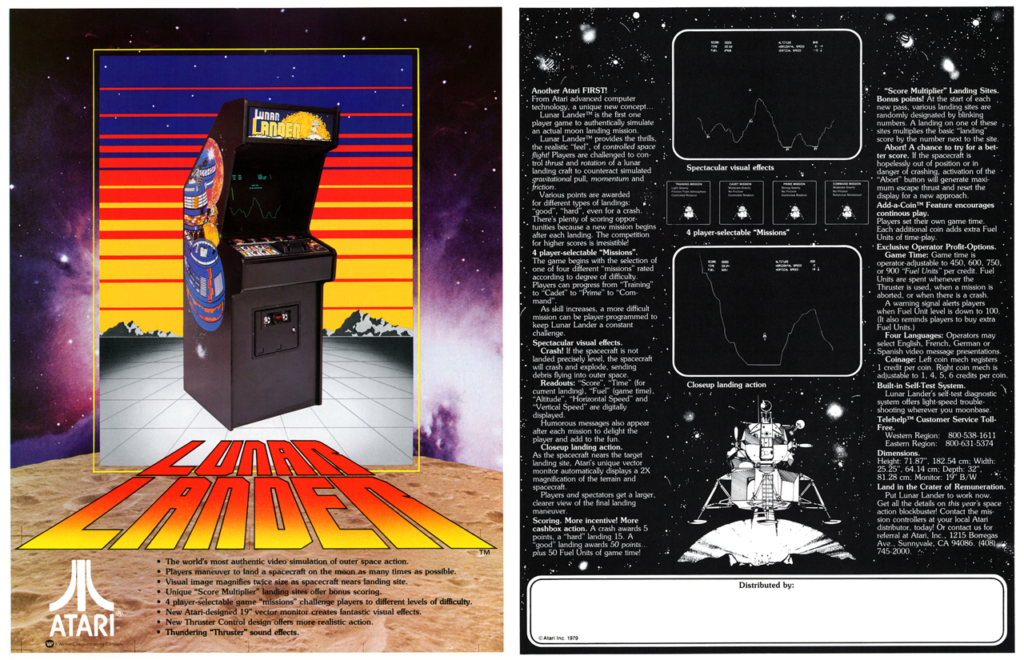
But who else got to play it? And who gets to play it going forward? Various attempts exist at faithfully emulating Spacewar! on modern computers; can we do the same for Moonlander?
Rick Naro adapted the Moonlander source code to iPad in 2013, but the app disappeared from the iOS store when Apple unceremoniously deactivated and delisted all 32-bit apps. He no longer has an Apple Developer account to upload a new version to the store, but he’s made it available on Github. If you have both a Mac and an iPad, you can load it up in Xcode and push it to an iPad. Or, if you have an Apple Developer account, maybe you can bring it back to the store?
This doesn’t help users with Android tablets, of course. Whether the code could be adapted or would have to be built from scratch is a question I can’t answer. And while touchscreen tablets are undoubtedly the superior way to play an old light pen game, turning Moonlander into mouse-based browser game wouldn’t be terrible.
Unfortunately, I lack the skills to do it myself. But if you end up volunteering to take on any of these tasks, let me know and I will absolutely signal boost the result.
We can’t all go to the Moon, but we should all be able to play Moonlander.
Sources
- 101 BASIC Computer Games (1975) by David H. Ahl
- BASIC Computer Games: Microcomputer Edition (1978) by David H. Ahl
- Brouhaha: DEC GT40 Graphic Display Terminal
- Brouhaha: Moonlander Assembly Source Code
- Correspondence with Jack Burness
- Correspondence with Jim Storer
- “Fighting A Spacewar In A No-Name Lab” (Boston Globe, Apr 21, 1974) by Eric Sauter
- Forty Years Of Lunar Lander (July 2009) by Benj Edwards
- Jim Storer’s Lunar Landing Game Related Documents
- “The Making Of Lunar Lander” (Retro Gamer #79)
- They Create Worlds, Vol. 1 (1971-1982) (2019) by Alex Smith
- Other publications Cash Box, DECUS
- Ad images from: Cash Box, Flyer Fever, Pin Repair
SPECIAL THANKS: Tony Bowe, Jack Burness, Benj Edwards (Vintage Computing), Dale Geddes (QuarterPast), Ethan Johnson (History Of How We Play), Devin Monnens (Desert Hat), Rick Naro, Alex Smith (They Create Worlds), Keith Smith (All In Color For A Quarter), Jim Storer, and the Secret Writers Society.
Comments:
Join the discussion on my Patreon page!

